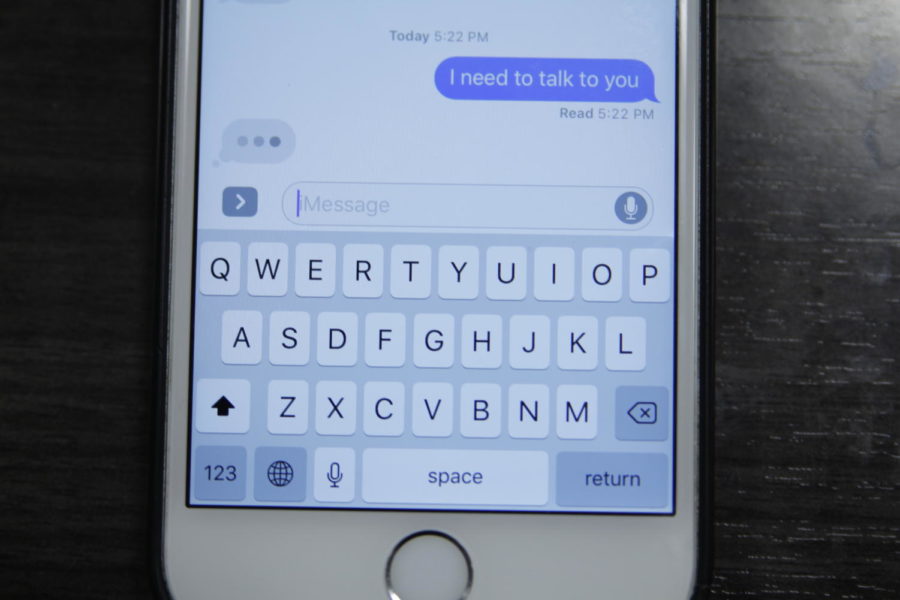Editorial: Effective communication in the digital age
Photo Illustration by Chris Jorgensen/Iowa State Daily
emily is typing
February 22, 2017
The anxiety of texting someone and seeing those three bouncing dots appear and disappear multiple times is known by many. What could they have typed? Why is it taking so long to respond? Was it something I said — or didn’t say? Did they understand my tone in my last text? Was that the right emoji to use?!
Effective communication can be difficult. Our generation is gifted with more forms of communication than any generation before us. We’ve evolved from face-to-face conversations to a complex system of words, symbols, pictures, .gifs and beyond. These new methods of conveying thoughts and emotions are fun and almost a part of an identity for a generation. But these new methods have their pitfalls that can lead to misunderstandings and unintended consequences.
Many know the frustration of sending a text laced with sarcasm that doesn’t land on the other end. Or, we’ve been the victim of misreading the author’s intention and have responded not in kind. The advent of emojis may have eased this problem somewhat, but the meaning of messages can still be lost in translation. Moreover, this problem is not simply with our forms of communication, but our intentions as well.
It’s no use having the recipient of your communication confused in the end. Being direct, clear and concise in both verbal and written communication can be a great start to ensuring your thoughts and opinions are understood. This may seem like an obvious point to make, but it often goes overlooked. Too often we but hope our idea is conveyed in the manner we intended.
Using “I” statements can be an effective way of discussing your opinions, especially when they are more personal. It makes the recipient exactly aware of your feelings. If clarification is needed, readers and listeners should ask questions and paraphrase what the other person said to ensure they are understanding what you said.
In non-professional communications, whether with text, Snapchat, social media or other forms, adding pictures, emojis and correct punctuation can also help eliminate misunderstandings. It is important to note, however, that all of these tools only work if you actually know what you want to say. Curb word vomit by answering what someone asks and not digressing into non-related topics. Think about the level of professionalism that is required in your message and err on the side of being formal instead of informal.
To add, it is important that communication in romantic relationships is equally clear. Too many conflicts or arguments began with simple misunderstandings, and effective communication is the first step toward a better relationship with your significant other.
You may still have sleepless nights waiting for those three bouncing dots to turn into a response; however, by communicating clearly, you’ll reduce the instances of being misunderstood and losing out on that next date.
















